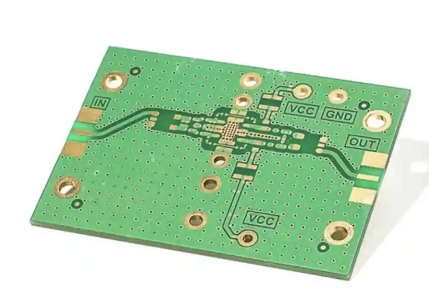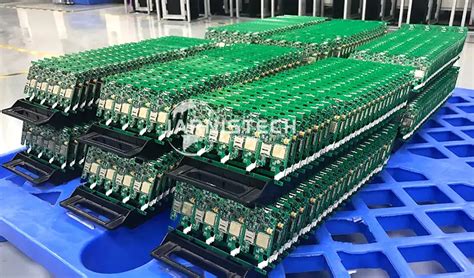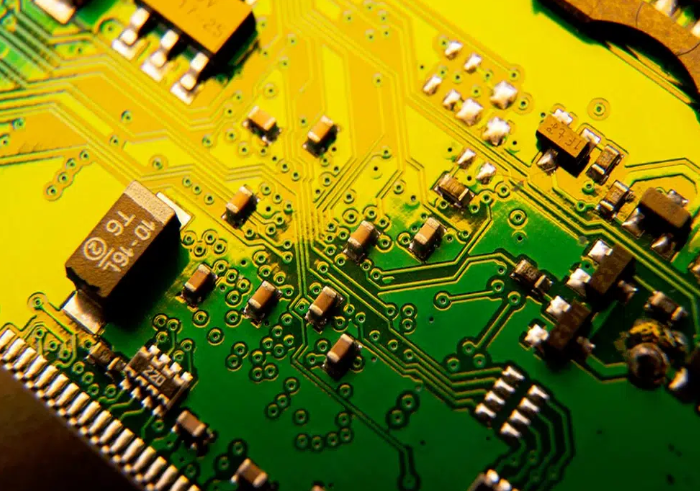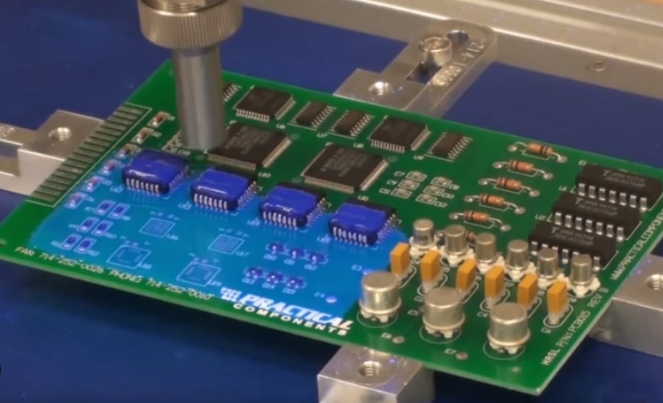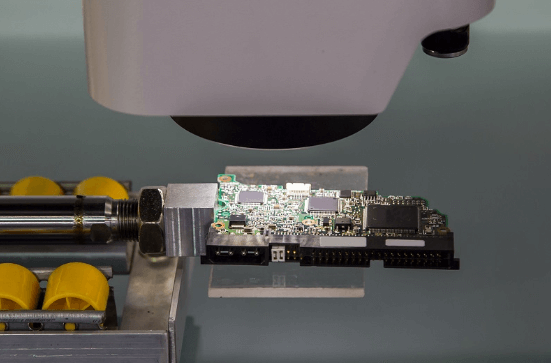Revolutionizing Aerospace with Advanced PCB Assembly Techniques
Key Takeaways
The pcb assembly process plays a crucial role in the advancement of aerospace technology. Innovations in pcba techniques have significantly enhanced the efficiency of manufacturing, allowing for faster production times and reduced costs. One notable advancement is the adoption of surface-mount technology, which minimizes the space required for components, making designs more compact and lightweight—a vital factor in aerospace applications. Furthermore, incorporating advanced materials in pcb assembly has improved thermal management and overall reliability of critical systems.
These innovations not only streamline manufacturing processes but also enhance performance and reliability. For instance, multilayer pcba solutions are instrumental in supporting complex electronic systems while meeting stringent aerospace standards. This contributes to safer flights by reducing the likelihood of component failure during operation. As these techniques continue to evolve, we can anticipate a future where advanced pcb assembly plays an even more pivotal role in aviation safety and efficiency, paving the way for cutting-edge aerospace solutions that meet the demands of modern air travel.
The Role of PCB Assembly in Aerospace Technology
In the realm of aerospace technology, PCB assembly plays a critical role in ensuring the functionality and reliability of various systems. As planes and spacecraft become increasingly sophisticated, the importance of an effective PCBA process cannot be overstated. The integration of advanced materials and innovative techniques in PCB assembly has led to substantial improvements in performance metrics essential for aviation safety and efficiency.
Key Contributions of PCB Assembly:
| Contribution | Description |
|---|---|
| Weight Reduction | Advanced PCBA techniques allow for lighter components, contributing to overall fuel efficiency. |
| Enhanced Signal Integrity | Innovations in layout design enhance communication between components, minimizing interference. |
| Increased Durability | New materials used in PCB assembly can withstand extreme temperatures and conditions prevalent in aerospace applications. |
| Streamlined Production | Automation and advanced tooling have improved the speed and accuracy of PCB manufacturing, leading to shorter lead times. |
The effective implementation of these technologies not only enhances performance but also significantly reduces the risks associated with airborne operations. As we delve deeper into the impact of innovative PCB assembly methods, it is clear that these advancements are fundamental to driving progress in aerospace applications, ensuring that they meet the high standards required for safety and reliability.
Innovations in PCB Assembly: Key Advancements for Aviation
The aerospace industry is experiencing a transformative wave, driven by innovations in PCB assembly that leverage advanced technology to enhance the efficiency and reliability of aviation systems. These developments in PCBA techniques are not merely incremental; they redefine how electronic components are integrated into aircraft. For instance, the adoption of automated assembly processes minimizes human error and accelerates production timelines, ensuring that components are produced with high precision. Moreover, the integration of flexible circuit designs allows for lighter weight solutions, which is crucial in aerospace where minimizing weight can lead to significant fuel savings and improved overall performance.
Additionally, smart manufacturing techniques, such as the use of sensors and advanced diagnostics within PCB assembly, enable real-time monitoring of production processes. This fosters a proactive approach to quality control, allowing manufacturers to swiftly identify and rectify potential issues before they escalate. Innovations such as these not only drive down costs but also enhance the sustainability of manufacturing practices within the airline industry.
As competition intensifies within aviation markets, the demand for reliable PCBA methodologies is rising sharply. Enhanced designs that incorporate both functionality and durability ensure that aerospace applications remain resilient under varying operational conditions. In summary, continued advancements in PCB assembly are poised to play a pivotal role in shaping the future of aviation technology, promoting systems that are more efficient, dependable, and aligned with modern sustainability goals.
Enhancing Reliability: The Impact of Advanced PCB Techniques
In the dynamic realm of aerospace, PCB assembly plays a pivotal role in ensuring the reliability and performance of aircraft systems. The advancement of PCBA techniques has introduced a host of innovations that have significantly elevated the manufacturing standards within this industry. For instance, employing high-density interconnect (HDI) technologies allows for more compact designs while maintaining robust performance under various conditions. This leads to reduced weight and improved fuel efficiency—critical factors in aerospace applications. Additionally, advanced pcb assembly methods that integrate automation and precision engineering minimize human error, resulting in consistently high-quality products.
Innovative materials used in PCBA, such as flexible printed circuits and improved soldering techniques, contribute to enhanced reliability by increasing resistance to thermal stress and environmental factors. These improvements not only bolster the longevity of components but also ensure that they meet stringent safety requirements.
“In aerospace, every component must be impeccably reliable; any failure can have catastrophic consequences.” This quote underscores the importance of continuously advancing PCB assembly methodologies to adapt to stricter regulations and expectations within the industry.
By integrating testing protocols throughout the manufacturing process, producers can detect potential issues early on, thereby reducing costs and risks associated with failures post-deployment. As these trends continue to evolve, advancements in PCBA are not just transformative—they are essential for fostering safer air travel and pushing the boundaries of aerospace technology further into a sustainable future.
Streamlining Aerospace Manufacturing with Efficient PCB Solutions
In today’s competitive aerospace industry, the demand for efficient PCB assembly processes has never been greater. Modern aerospace applications require printed circuit board assembly (PCBA) solutions that not only meet rigorous standards but also significantly enhance production timelines. By adopting state-of-the-art technologies such as automated assembly and advanced testing methods, manufacturers can streamline their workflow, reducing both costs and production times. These innovations contribute to a higher yield rate and more consistent quality, essential in an industry where precision is paramount. Moreover, effective pcb assembly methods facilitate the integration of complex systems within aircraft, ensuring that every component functions harmoniously. As we continue to navigate through technological advancements, it’s clear that embracing innovative PCBA practices not only enhances operational efficiency but also positions the aerospace sector for future growth and development. In this ever-evolving landscape, being at the forefront of efficient PCB solutions is crucial for companies aiming to maintain a competitive edge while ensuring reliability and safety in their aerospace applications.
Future Trends: The Evolution of PCB Assembly in Aviation
The landscape of aerospace is undergoing a significant transformation thanks to advanced PCB assembly (or PCBA) techniques that are paving the way for enhanced aircraft performance. One of the most notable trends is the integration of smart technologies within PCB assemblies, enabling real-time monitoring and diagnostics. This shift not only optimizes operational efficiency but also reduces maintenance costs, making aircraft safer and more reliable over time.
The development of lightweight materials for PCBA is another innovation that plays a crucial role in aviation. By utilizing materials that not only decrease weight but also maintain structural integrity, manufacturers can ensure better fuel efficiency and performance. Moreover, the shift towards automated assembly processes allows for greater precision and consistency, significantly lowering the potential for human error.
As regulatory standards around safety tighten, aerospace companies are increasingly focusing on the reliability of their PCB assemblies. Advanced PCBA techniques enhance this reliability through rigorous testing protocols and quality assurance measures, which aim to meet or exceed industry benchmarks.
In summary, the ongoing evolution in PCB assembly methods places emphasis on safety, efficiency, and performance improvements within the aviation sector. By leveraging state-of-the-art technologies and materials, manufacturers are not just keeping pace but actively shaping the future of aerospace applications.
Ensuring Safety: How Advanced PCBs Contribute to Safer Flights
In the aerospace sector, the integration of advanced PCB assembly (PCBA) techniques plays a pivotal role in enhancing overall flight safety. The evolution of pcba technologies has led to significant improvements in the design and functionality of critical systems in aircraft. Modern PCBs are engineered with advanced materials and innovations that promote increased durability and reliability, which are essential in high-stakes environments like aviation. For instance, by utilizing multi-layered pcba, manufacturers are able to incorporate more complex circuitry while reducing size and weight, thus enhancing the overall efficiency of avionics systems. Furthermore, innovations such as automated optical inspection (AOI) during the pcb assembly process help detect faults earlier in production, ensuring that only high-quality components are assembled into aircraft systems. This proactive approach not only minimizes risks but also leads to a reduction in maintenance costs over the life cycle of an aircraft. By investing in cutting-edge PCB assembly technologies, the aerospace industry is not just improving operational reliability but ultimately contributing to safer flight experiences for passengers and crew alike.
Case Studies: Successful Implementations of PCB Innovations in Aerospace
The aerospace industry has seen remarkable advancements through innovative PCB assembly techniques, notably highlighted in various case studies that demonstrate their effectiveness. In one such instance, a leading manufacturer adopted advanced PCBA solutions to enhance the performance of navigation systems used in commercial aircraft. By integrating high-density interconnect (HDI) technology, engineers achieved a significant reduction in weight while simultaneously improving the reliability of critical components. Another notable implementation involved the introduction of flex-rigid PCBs for satellite applications, which allowed for more compact designs without compromising on durability. These innovations in PCB assembly not only facilitated more efficient manufacturing processes but also contributed to enhanced performance under extreme conditions. The successes observed are compelling evidence that strategic investments in advanced PCB assembly technology can lead to safer and more effective aerospace applications, setting a benchmark for future developments in the sector. As aerospace engineers continue to leverage these cutting-edge solutions, we can expect an ongoing transformation that prioritizes efficiency and reliability in every aspect of aerospace design and functionality.
Conclusion
In summary, the advancement of PCB assembly techniques is pivotal to the evolution of aerospace technology. Innovations in this field, such as automated processes and enhanced materials, significantly contribute to the efficiency and durability of PCBA components. These advancements not only optimize performance but also reduce manufacturing costs, which are critical for scaling production. Furthermore, as aerospace applications demand higher reliability and safety standards, the integration of advanced PCB assembly methods helps in creating systems that are resilient under extreme conditions. This ongoing evolution promises a future where air travel is not only more efficient but also safer for passengers and crews alike. Emphasizing the role of these cutting-edge technologies ensures a commitment to excellence in aviation and reinforces the importance of investing in modern PCBA solutions to address industry challenges.
FAQs
What is PCB assembly in aerospace?
PCB assembly (or PCBA) in aerospace involves the process of fabricating and assembling printed circuit boards essential for the various electronic systems used in aircraft. These boards support avionics, navigation, and communication technologies.
Why is advanced PCB assembly crucial for aviation?
Advanced pcb assembly techniques ensure high reliability and performance in challenging aerospace environments. Innovations such as surface mount technology (SMT) allow for more compact assembly while increasing functionality.
How do innovative PCB techniques enhance reliability?
Innovative PCB techniques enhance reliability through improved manufacturing processes, better materials selection, and rigorous testing protocols. This helps prevent failures that could jeopardize flight safety.
What are some key advancements in aerospace PCB assembly?
Key advancements include using flexible PCBs, automated assembly processes, and improved thermal management solutions. These innovations lead to lighter components that do not compromise on durability or efficiency.
How are efficiency and cost-effectiveness achieved in PCB manufacturing?
Efficiency is achieved through streamlined production techniques such as automated placement and soldering. These processes reduce labor costs and minimize errors, contributing to a more cost-effective pcba solution.
What future trends should we expect in aerospace PCB technology?
Future trends may include the integration of artificial intelligence in design-to-manufacturing processes, advancements in materials like graphene for enhanced performance, and continued miniaturization of components to meet evolving aircraft demands.
For more information on cutting-edge pcb assembly, please visit our site:


